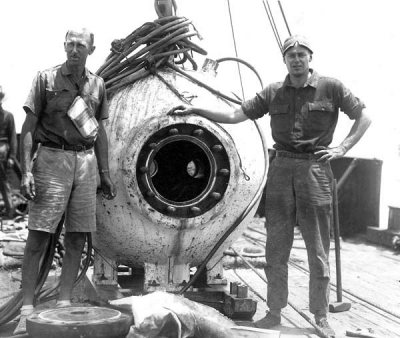
Though the ocean covers more than 70% of the Earth’s surface, only 10% of it has been explored. The rest still remains a mystery. The first systematic deep sea exploration began in 1872 on board HMS Challenger. The expedition revealed that the deep sea supports a diverse biota.
The great age of exploration and discovery that began with the Portuguese and Spanish in the fifteenth century had largely run its course by the latter part of the nineteenth century. All the major landmasses of the world had been discovered by that time, the coastlines charted, and explorers were making major inroads towards exploring the continental interiors for geographic, scientific, and commercial purposes. Throughout this time the oceans served as highways between nations and continents, highways upon which ships sailed carrying raw materials, finished goods, people, and money from port to port. Fishermen, whalers, sealers, and others depended on the sea for their livelihood, and the products of their work fed and employed countless people in nearly every country. Yet, in spite of this dependence on the oceans, no systematic scientific study had been made of them until the Challenger set sail in 1872.
Although explorations on land were progressing well, land encompasses only about 30% of the Earth’s surface. No matter how thoroughly the continents were mapped and explored, there was a limit to our understanding of the Earth unless serious, scientific exploration of the oceans took place. This is the role that Challenger,under the scientific direction of Charles Wyville Thomson (1830-1832) and the military leadership of Captain George Nares (1831-1915) was to fill.
The Challenger voyage was a logical progression from other scientific voyages sponsored by Britain. Captain James Cook (1728-1779) made three voyages of discovery with the Endeavour between 1768 and his death in 1779, Charles Darwin (1809-1882) accompanied the Beagle in 1831 on a voyage of nearly five years, and other lesser known scientists and explorers made similar voyages. But England’s empire on land was held together by her dependence on the sea. So, in 1870, Thomson, a professor of natural history at Edinburgh University, persuaded the Royal Society to recommend a voyage of oceanographic exploration and study, a recommendation that was granted.
At the time Challenger set sail, geologists were relatively certain that there were vast expanses of featureless plains at the bottom of the oceans, probably covered with all the sediments washed from the continents. They were also sure that life could not exist at the ocean bottoms and that any sediments found would likely be unremarkable, fine-grained sediments that varied little from place to place. All of these suppositions were shown to be wrong. Finally, the land-based scientists had some facts with which to work.
Credit : Encyclopedia.com
Picture Credit : Google

